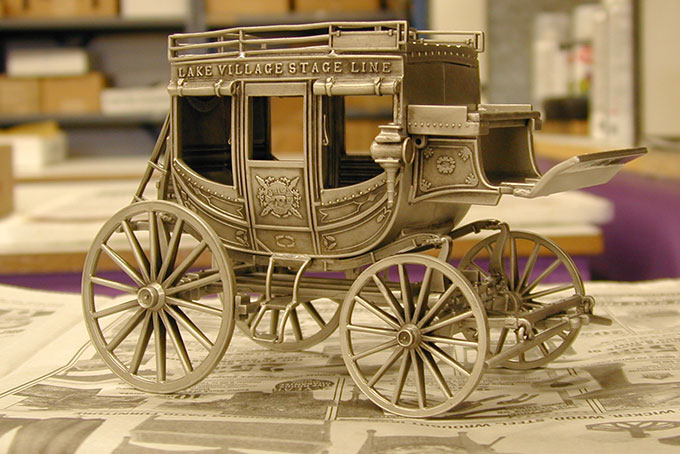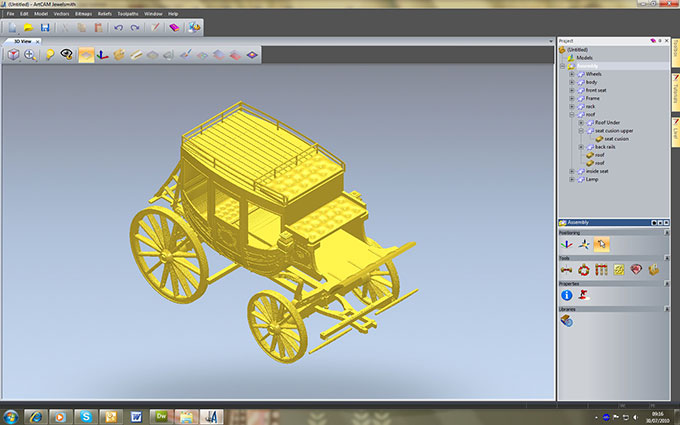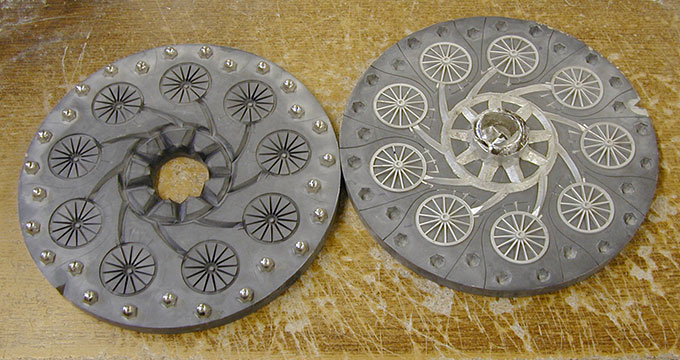W. T. Wilson Inc., based in Rhode Island, USA, has been creating custom mould making and detailed pewter castings for wholesale, retail and speciality stores since 1972. However, like any well established company, it needed to invest in the latest technology to remain competitive.
For over 35 years, it relied on the accuracy and eye for detail of its designers to hand engrave their pieces. Using hand engraved plastic templates, a manual Gorton pantograph machine would be used to manually cut aluminium or steal hub and dies; making this an arduous and highly time intensive process.

This became even more convoluted if the customer required further changes or had miscalculations in their design specification, increasing both production costs and turnaround time. Peter Birch, Model Maker at W. T. Wilson Inc., comments, 'On numerous occasions our customers had used the wrong size or left out an important component. We therefore needed a way for our customers to approve the 3D design prior to us creating a prototype.'
W. T. Wilson also required a machine that was capable of creating three dimensional reliefs, rather than making it at the jeweller's bench. They therefore invested in a four axis CNC milling machine that came complete with software, but soon realized that the software supplied was not adequate to design and mill to their specifications. The search began for better, more flexible software.

"There were so many programs that would only design 3D objects, which meant that we would have had to purchase a secondary program to calculate the toolpaths", says Peter. "Not only that, but it would have had to be able to export them in the unique file type that our milling machine required."
Peter then came across Delcam's advanced CADCAM software, ArtCAM Pro, which has been specifically developed for artistic engraving applications. Peter explains:
ArtCAM more than solved the problem. We can create new or edit existing designs and then email them in 3D form to the customer for approval. We can also add reliefs to our 3D library that can be used for future projects."

Prior to ArtCAM, Peter had to mill individual components of a design flat and then bend, hammer, or wrap pieces around an arbor to get the necessary shape. The body of a stage coach ornament is a great example of this. Hours would then be spent calculating the size and the distortion of each panel to compensate for shaping and bending. With ArtCAM, Peter is able to create complex shapes using its intuitive 3D modelling and sculpting tools directly in a 3D environment. For advanced projects such as this stage coach, comprising of 26 individual pieces, Peter could build each individual component and then see all of them together, moving and resizing elements where required.
Once happy with the design, he could then simulate the block of metal that the components would be cut from. Peter explains, "I can lay it inside a block of metal, calculate and simulate the toolpaths, refine them to a desired finish and also calculate the machining time. This gives me a much more accurate estimation of cost. Another great tool from ArtCAM is the material weight calculator. With a large model, being able to calculate the weight of combined castings allows me to scale the model to get it within our costumers' price point."
Peter concludes:
We chose ArtCAM not only for its flexibility but the dedication of our local reseller DM Solutions, Inc. An ArtCAM technician had driven to our facility; analyzed our machine controller and then written a custom post processor to work with our CNC machine. We now run the machine overnight; the software pays for itself while we sleep!"

